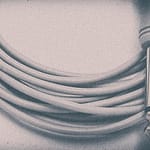Video transcription Hi everyone, welcome to another Dispomed video. Today, we are going to talk about the differences between the standard Y circuits and the Coaxial circuits. Everyone is familiar with the standard Y circuits. The Y circuit has two independent connections: one for inspiration and another for expiration. Both of them are 22-mm connectors. … [Continue Reading]
Risk Factors in Small Animal Anesthesia
Table of Contents Anesthesia is often frightening and used as a scapegoat when a patient dies during surgery. Mortality is commonly used to measure anesthesia success, even though it should be the lack of complications that should be used. Unfortunately, totally safe anesthesia does not exist. Therefore, it is important to understand what factors can … [Continue Reading]
Thermometers
Why use a thermometer? Body temperatures can plummet during anesthesia, and this can have major consequences, such as decreased metabolism (causing longer recovery periods), reduced anesthesia requirement (causing an overdose with potentially harmful side effects), bradycardia (causing decreased perfusion), and an increase of the numbers of postoperative complications. Hyperthermia is also a risk, especially for septic … [Continue Reading]
Non-Invasive Blood Pressure (Oscillometric devices)
Why use it? One of the objectives of anesthesia is to provide adequate blood flow to tissue. One way to assess blood flow is to measure blood pressure (ideally mean blood pressure) and heart rate. Most of the time, in small animal anesthesia, blood pressure is measured non-invasively. It is, however, possible to measure blood … [Continue Reading]
Non-Invasive Blood Pressure (Doppler)
Why use a Doppler? One of the objectives of anesthesia is to provide adequate blood flow to tissue. One way to assess blood flow is to measure blood pressure (ideally mean blood pressure) and heart rate. Most of the time, in small animal anesthesia, blood pressure is measured non-invasively. It is, however, possible to measure … [Continue Reading]
Electrocardiogram (ECG)
Why use an ECG? Electrical activity of cardiac cells is responsible for the initiation of every heartbeat. Electrical activity is essential for the heart but is not correlated with the efficiency of each beat. The electrical activity can be normal, but the beat grossly inefficient. Any disturbances of the electrical activity may affect the efficiency of … [Continue Reading]
Capnography
Why use a capnograph? Carbon dioxide (CO2) is a metabolic by-product of cells. It is transported by the blood to the lungs, where it is eliminated. Therefore, measuring expired CO2 assesses metabolism, the cardiovascular system, and respiratory system. Additionally, as the anesthesia circuit role is to prevent the rebreathing of CO2, measuring inspired CO2 also … [Continue Reading]
Why and When use a Pulse Oximeter
Why use a pulse oximeter? Oxygen (O2) is transported from the lungs to the cells by the blood. O2 is either fixed to hemoglobin or free in the blood. However, the amount of free O2 in the blood is minimal compared to O2 fixed to hemoglobin, and free O2 does not participate significantly to the … [Continue Reading]
How to Detect Soda Lime Exhaustion?
Introduction Soda lime is responsible for the elimination of carbon dioxide (CO2) in rebreathing circuits. When exhausted, CO2 accumulates in the circuit and is rebreathed by the patient, causing respiratory acidosis that can be harmful. Key points: methods to know when to change soda lime: Increased inspired CO2 (detected by capnography) Color change Lack of … [Continue Reading]
How and When to Replace your Dental Handpiece Tips and Burs
Are your tips not working as well as before? The time may have arrived to replace them. Watch this short video which explains how and when to change your tips and burs on your handpieces.
- « Previous Page
- 1
- …
- 15
- 16
- 17
- 18
- 19
- 20
- Next Page »









